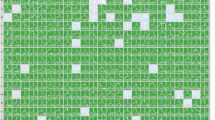Abstract
Objective
To re-confirm and characterize the biophysical and pharmacological properties of endogenously expressed human acid-sensing ion channel 1a (hASIC1a) current in HEK293 cells with a modified perfusion methods.
Methods
With cell floating method, which is separating the cultured cell from coverslip and putting the cell in front of perfusion tubing, whole cell patch clamp technique was used to record hASIC1a currents evoked by low pH external solution.
Results
Using cell floating method, the amplitude of hASIC1a currents activated by pH 5.0 in HEK293 cells is twice as large as that by the conventional method where the cells remain attached to coverslip. The time to reach peak at two different recording conditions is (21±5) ms and (270±25) ms, respectively. Inactivation time constants are (496±23) ms and (2284±120) ms, respectively. The cell floating method significantly increases the amiloride potency of block on hASIC1a [IC50 is (3.4±1.1) μmol/L and (2.4±0.9) μmol/L, respectively]. Both recording methods have similar pH activation EC50 (6.6±0.6, 6.6±0.7, respectively).
Conclusion
ASICs channel activation requires fast exchange of extracellular solution with the different pH values. With cell floating method, the presence of hASIC1a current was re-confirmed and the biophysical and pharmacological properties of hASIC1a channel in HEK293 cells was precisely characterized. This method could be used to study all ASICs and other ligand-gated channels that require fast extracellular solution exchange.
摘要
目的
用一种改良的灌流方法研究和再次证实HEK 293细胞内源性酸敏感性离子通道的生物物理和药理学特性。
方法
使用全细胞膜片钳技术, 将记录细胞与玻片分离, 并使细胞位于输液맜前, 呈漂浮状态, 以记录在低pH 值外液中, HEK293 细胞的酸敏感性1a 型离子通道的电流。
结果
使用细胞漂浮方法, pH 5.0 的细胞外液诱发的酸敏感性1a 型离子通道电流是传统细胞附着法诱发的两倍。在两种不同的方法下, 通道电流达到峰值的时间分别是 (21±5) ms和 (270±25) ms, 失活的时间常数分别是(496±23) ms 和(2284±120) ms。细胞漂流法也明显增强amiloride 对酸敏感性1a型离子通道的阻断效能。两种方法具有相似的pH激活的EC50 (分别为6.6±0.6, 6.6±0.7)。
结论
酸敏感性1a 型离子通道的激活需要细胞外液快速的交换。通过细胞漂浮的方法, 我们再次证明了酸敏感性1a型离子通道电流的存在, 更精确地分析了HEK 293 细胞内源性酸敏感型离子通道的生物物理和药理学特性。这一改良的方法能够用于研究所有的酸敏感型离子通道和需要快速细胞外液交换的配体门控通道。
Similar content being viewed by others
References
Waldmann R, Lazdunski M. H+-gated cation channels: neuronal acid sensors in the NaC/DEG family of ion channels. Curr Opin Neurobiol 1998, 8: 418–424.
Wemmie JA, Chen J, Askwith CC, Hruska-Hageman AM, Price MP, Nolan BC, et al. The acid-activated ion channel ASIC contribution to synaptic plasticity, learning, and memory. Neuron 2002, 34: 463–477.
Price MP, Lewin GR, Mcilwrath SL, Cheng C, Xie J, Heppenstall PA, et al. The mammaliam sodium channel BNC1 is required for normal touch sensation. Nature 2000, 407: 1007–1011.
Price MP, McIlwrath SL, Xie J, Cheng C, Qiao J, Tarr DE, et al. The DRASIC cation channel contribute to the detection of cutaneous touch and acid stimuli in mice. Neuron 2001, 32: 1071–1083.
Xiong ZG, Zhu XM, Chu XP, Minami M, Hey J, Wei WL, et al. Neuroprotection in ischemia: blocking calcium-permeable acid-sensing ion channels. Cell 2004, 118: 687–698.
Yermolaieva O, Leonard AS, Schnizler MK, Abboud FM, Welsh MJ. Extracellular acidosis increases neuronal cell calcium by activating acid-sensing ion channel 1a. Proc Natl Acad Sci USA 2004, 101: 6752–6757.
Pignataro G, Simon RP, Xiong ZG. Prolonged activation of ASIC1a and the time window for neuroprotection in cerebral ischaemia. Brain 2007, 130: 151–158.
Wu LJ, Duan B, Mei YD, Gao J, Chen JG, Zhuo M, Characterization of Acid-sensing Ion Channels in Dorsal Horn. J Biol Chem 2004, 279: 43716–43724.
Duan B, Wu LJ, Yu YQ, Ding Y, Jing L, Xu L, et al. Upregulation of acid-sensing ion channel ASIC1a in spinal dorsal horn neurons contributes to inflammatory pain hypersensitivity. J Neurosci 2007, 27: 11139–11148.
Mazzuca M., Heurteaux C, Alloui A, Diochot S, Baron A, Voilley N, et al. A tarantula peptide against pain via ASIC1a channels and opioid mechanisms. Nat Neurosci 2007, 10: 943–945.
Gunthorpe MJ, Smith GD, Davis JB, Randall AD. Characterisation of a human acid-sensing ion channel (hASIC1a) endogenously expressed in HEK293 cells. Pflugers Arch 2001, 442: 668–674.
Chen CC, England S, Akopian AN, Wood JN. A sensory neuron-specific, proton-gated ion channel. Proc Natl Acad Sci USA 1998, 95: 10240–10245.
Baron A, Waldmann R, Lazdunski M. ASIC-like, proton-activated currents in rat hippocampal neurons. J Physiol 2002, 539: 485–494.
Bässler EL, Ngo-Anh TJ, Geisler HS, Ruppersberg JP, Gründer S. Molecular and functional characterization of acid-sensing ion channel (ASIC) 1b. J Bio Chem 2001, 276: 33782–33787.
Spitzer KW, Bridge JH. A simple device for rapidly exchanging solution surrounding a single cardiac cell. Am J Physiol 1989, 256: C441–C447.
Author information
Authors and Affiliations
Corresponding authors
Rights and permissions
About this article
Cite this article
Li, A., Si, W., Hu, XW. et al. An optimized recording method to characterize biophysical and pharmacological properties of acid-sensing ion channel. Neurosci. Bull. 24, 160–165 (2008). https://doi.org/10.1007/s12264-008-1229-5
Received:
Published:
Issue Date:
DOI: https://doi.org/10.1007/s12264-008-1229-5




